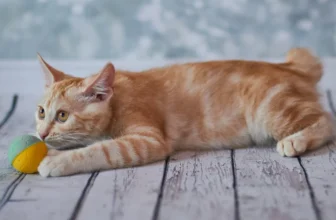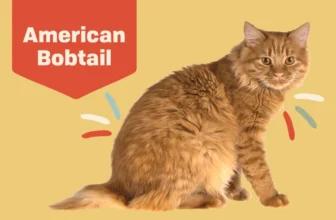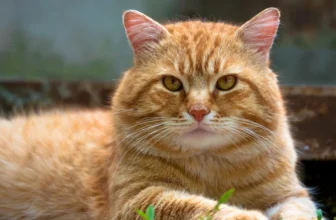Have you ever wondered why some cats have long, flowing tails, while others have stumpy little nubs? The answer lies in their genetics and evolution, specifically in a unique breed of cat known as the American Bobtail. These adorable felines are renowned for their distinct bobbed tails, which not only give them a distinctive look, but also play a vital role in their health and behavior. In this article, we’ll explore the importance of tail length in American Bobtails, including their communication abilities, behavior, and physical health implications. So, let’s dive in and discover what makes these cats so special!
The Role of Tail in Communication
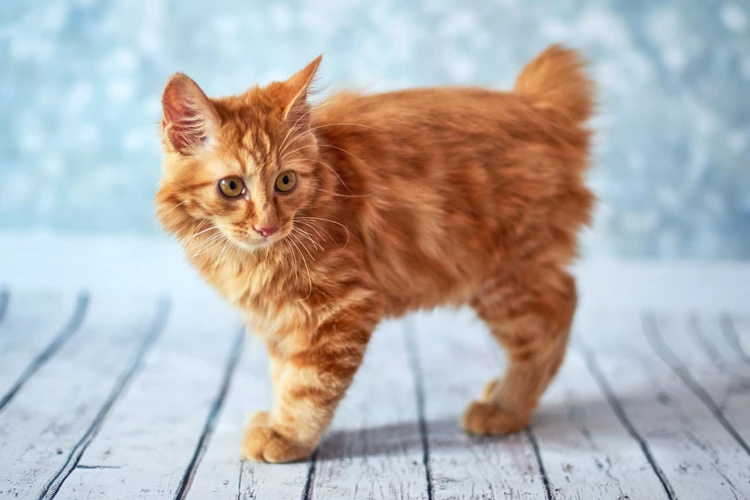
It may come as a surprise, but a cat’s tail is more than just a mere appendage. In the case of American Bobtails, their tails play a vital role in communication. Through a combination of movements, positions, and even the size, a bobtail’s tail can convey various messages that are essential in feline interactions. In this section, we’ll explore the different ways a bobtail’s tail could help them communicate effectively. Let’s dive in and find out why a bobtail’s tail is no ordinary tail. For more information about the meanings behind different tail shapes of American Bobtails, check out our article on “Different Tail Shapes of Bobtails: Meanings”.
Tail Positions and Meanings
The tail of an American Bobtail has a crucial role in their communication and their body language. There are various positions that their tail can take, each with its own meaning.
Curved tail: If an American Bobtail has their tail curved upward, it’s a sign that they are feeling happy and confident. This tail position is often seen when they are playing or interacting with their owners.
Straight tail: A straight tail is a sign that the American Bobtail is in a neutral state. They’re not feeling threatened nor comfortable. They might just be resting or observing their environment.
Puffed tail: When an American Bobtail puffs up their tail, it usually implies that they are feeling threatened, scared, or anxious. This position makes them look bigger and more prominent in order to deter potential threats.
Low tail: A low, tucked tail is a sign that the cat is feeling submissive or scared. This tail position can be due to different reasons like a new environment, new people or other pets, loud noises, or even pain.
In addition to the above-mentioned tail positions, an American Bobtail can also communicate their mood through the movement of their tail. A wagging tail might indicate happiness or excitement, while a lashing tail could mean aggression or irritation.
Understanding the meaning of different tail positions is important for cat owners to better comprehend their cat’s feelings and emotions. It can also help prevent potential accidents or misunderstandings, especially when interacting with other pets or children.
In order to maintain the communication functions of an American Bobtail’s tail, it’s essential to take good care of it. Regularly cleaning and brushing their tails not only helps prevent infections and hygiene-related issues but also promotes a strong bond between you and your cat.
If you want to know more about how an American Bobtail’s tail affects their agility and balance, you can read our article on tail muscles, bobtail agility. Additionally, learning about the correlation between their tail size and balance can also give you an insight into their behavior. Check out our article on tail size and balance in American Bobtails.
Tailless Cats vs Bobtail Cats
Bobtail cats are often misunderstood and sometimes confused with tailless cats, but they are not the same. Bobtail cats, such as the American Bobtail, have a tail that is up to one-third shorter than a typical cat’s tail. In contrast, tailless cats are born without a tail altogether.
Here’s a comparison table between bobtail cats and tailless cats:
| Characteristic | Bobtail Cats | Tailless Cats |
|---|---|---|
| Appearance | Shorter tail than typical cats | No tail at all |
| Genetics | Carry the bobtail gene | Carry the tailless gene |
| Behavior | Playful, intelligent, and agile | May have balance and mobility issues |
| Grooming | No specific grooming needs for their tails | May require extra hygiene measures to prevent infections |
It’s important to note that the bobtail gene in American Bobtails is different from the gene that causes taillessness in other breeds such as the Manx or Cymric cats. The bobtail gene causes a shorter tail rather than no tail at all.
In general, bobtail cats tend to be playful, intelligent, and agile, thanks in part to their unique tail. On the other hand, tailless cats may experience issues with balance and mobility, depending on the degree of taillessness. Additionally, tailless cats may require extra hygiene measures to prevent infections since there is no tail to keep their rear end clean.
Ultimately, whether you prefer a bobtail or tailless cat depends on your personal preference and lifestyle. But regardless of the type of cat you choose, it’s important to provide proper care and attention to their unique needs, including tail care for American Bobtails. You can read more about their tail care on this link. And if you’re interested to learn more about the bobtail gene, check out our article on bobtail gene or tail evolution.
The Connection Between Bobtail and Behavior
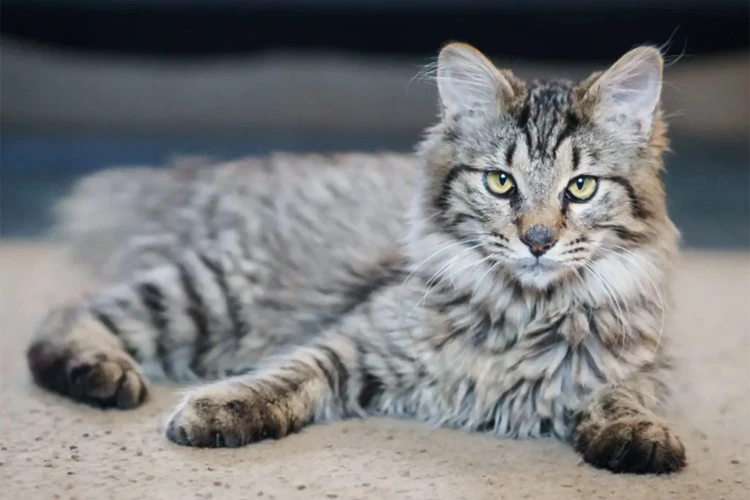
Undoubtedly, the physical traits of a cat breed play a crucial role in shaping its behavior. The American Bobtail, with its distinctive short tail, is a perfect example of how the anatomy of a cat can influence its habits and temperament. In this section, we will explore the fascinating connection between a Bobtail’s tail length and its behavior, highlighting how these cats use their tails as an instrument of communication, their unmatched agility and playful nature, and their inherent hunting instincts. So, let’s delve deeper into this intriguing topic and uncover the secrets of the American Bobtail’s behavior.
Agility and Balance
The length of a bobtail can have a significant impact on the agility and balance of an American Bobtail. With their unique muscular build and powerful hind legs, Bobtails are capable of impressive feats of athleticism, and their tail plays an important role in maintaining their balance and stability.
Here are some ways that tail length affects agility and balance in American Bobtails:
- Longer tails provide greater balance
- A longer tail can act as a counterbalance, helping the Bobtail to maintain equilibrium as it navigates small spaces or jumps from heights
- Shorter tails offer more precision
- A shorter tail allows for greater control in tight spaces, which may be advantageous in certain types of hunting or exploration
- Medium tails offer the best of both worlds
- A tail of medium length strikes a balance between precision and balance, making it an ideal length for most American Bobtails
It is important to note that agility and balance are not solely determined by tail length. While a longer tail may provide greater balance, a Bobtail’s overall fitness, strength, and coordination play an equally important role in its athletic abilities. With proper training and care, however, a Bobtail with a well-suited tail length can exhibit impressive balance and agility, making it a truly exceptional and captivating animal.
Playfulness and Intelligence
Bobtail cats are known for their charming and playful nature. Interestingly, the length of their tail can influence their level of intelligence and playfulness. In fact, some studies suggest that bobtail cats are more intelligent than long-tailed cats. Let’s explore the connection between tail length and the playful and intelligent nature of bobtail cats.
Playfulness of Bobtail Cats
Bobtail cats are known to be active and playful. They are curious and enjoy exploring their environment. According to the Cat Fanciers’ Association, bobtail cats are “outgoing, friendly, and intelligent.” They love to play with toys, chase after objects, and engage in interactive activities with their owners. Their playful nature makes them a great choice for families with children, as they can keep up with their boundless energy.
Intelligence of Bobtail Cats
Bobtail cats are also known for their intelligence. The shorter length of their tail does not affect their cognitive abilities. In fact, some studies suggest that bobtail cats are more intelligent than long-tailed cats. This could be due to their ability to adapt to different environments and situations. They are quick learners and can pick up new skills easily. For example, they can be trained to perform various tricks and behaviors, such as fetching and sitting on command.
The Bobtail Advantage
The combination of playfulness and intelligence makes bobtail cats a popular choice among pet owners. They are not only fun to be around but are also able to learn new things quickly. Their shorter tail gives them an advantage in terms of agility and balance, allowing them to perform acrobatic feats that long-tailed cats may find challenging. All in all, a bobtail cat can be a rewarding and entertaining addition to any home.
| Playfulness | Intelligence | |
|---|---|---|
| Long-Tailed Cats | Can be playful | Intelligent |
| Bobtail Cats | Very playful | Highly intelligent |
The length of tail in bobtail cats is not just a physical trait but also plays a crucial role in their behavior and intelligence. The shorter tail does not limit their agility or cognitive abilities but instead gives them advantages in these areas. Bobtail cats are highly recommended for pet owners seeking a friendly, intelligent, and playful feline companion.
Feral Ancestry and Hunting Instincts
The American Bobtail is known for its strong hunting instincts and this can be attributed to their feral ancestry. These cats were descended from feral cats and are still known to display some of the same behaviors as their wild ancestors. In fact, the bobtail is known for its exceptional hunting skills, which make it a great mouser and hunter.
Table:
| Behavior | Explanation |
|---|---|
| Hunting Techniques | The American Bobtail is a skilled hunter, who uses a variety of techniques to capture prey. They use their strong, muscular legs to pounce on prey from a distance, while their keen senses of smell and hearing help them locate prey from far away. |
| Stalking and Pouncing | The Bobtail’s feral ancestor’s tendencies to stalk and pounce on unsuspecting prey is still evident in their behavior. They are known to hide in the bushes or wait patiently for prey before striking quickly and efficiently. |
| Climbing and Jumping | The Bobtail’s strong and muscular legs give them the ability to climb trees and jump long distances, which helps them to catch prey that might be out of reach for other cats. |
| Patience and Tenacity | Their feral background has honed the Bobtail’s ability to be patient and persevering in their hunt for prey. They will bide their time and wait hours or even days for the right opportunity to catch their prey. |
The Bobtail’s feral ancestry and hunting instincts make them an excellent hunter, but it is important to keep in mind that these instincts can be triggered by even the slightest movement or sound. As such, it is crucial for their owners to provide them with plenty of stimulation, exercise, and playtime to keep these instincts in check. Additionally, it is important to ensure their hunting instincts do not result in harm to other animals or pets within the household.
The Health Implications of Tail Length
The length of a cat’s tail can have significant implications on their overall health and well-being. From potential injuries and genetic defects to hygiene issues and infections, the tail plays a vital role in a cat’s overall health. As a responsible pet owner, understanding the health implications of tail length is crucial in ensuring the happiness and longevity of your feline friend. Let’s dive into the various health factors that can be impacted by the length of a cat’s tail.
Injuries and Trauma
The length of the bobtail can play a significant role in the health of the American Bobtail. Injuries and trauma are a common concern for these cats due to their active and adventurous nature. According to recent studies, cats with shorter tails are at a higher risk for tail injuries. This is because the tail is not able to protect itself in the same way a longer tail does.
Injuries to the tail can range from mild to severe. For instance, a cat may experience a minor injury that causes a sprain, or they may suffer from a fracture or dislocation of their tailbone. Such an injury can be very painful and require prompt medical attention. The healing process can take several weeks, depending on the severity of the injury.
To prevent tail injuries, it is important to provide a safe environment for your American Bobtail. Keep hazardous objects out of their reach, and supervise outdoor playtime. Regular check-ups with a veterinarian can also help identify any potential health concerns before they become serious.
Another common injury that can occur is tail trauma. This happens when the tail gets caught in a door or is stepped on. Similar to tail injuries, cats with shorter tails are at a higher risk for tail trauma. It is crucial to be cautious around your cat’s tail and handle them with care.
While the bobtail is a defining characteristic of the American Bobtail breed, it is important to be aware of the potential health implications of tail length. By taking steps to prevent injuries and trauma, such as providing a safe environment and being cautious around your cat’s tail, you can help ensure your feline friend remains as healthy and happy as possible.
| Injuries and Trauma | Possible Causes | Preventive Measures |
|---|---|---|
| Tail Injuries | Risk increases with shorter tails, adventurous nature | Provide a safe environment, supervise outdoor playtime, regular check-ups with a veterinarian |
| Tail Trauma | Cat’s tail caught in a door, stepped on | Handle cat’s tail with care |
Genetics and Birth Defects
The length of an American Bobtail’s tail is mainly determined by genetics, and any deviations from the breed standard could be a result of birth defects. Birth defects are structural abnormalities that occur during fetal development, and they may affect the length and shape of the tail.
There are a few genetic mutations that are associated with bobtail cats. One of the most common is the Manx gene, which is responsible for the naturally bobbed tail in the Manx cat. However, this same gene can also produce tailless kittens or kittens with shortened tails in other breeds, including the American Bobtail.
Although a bobtail cat may have a shorter tail, it is important to note that this mutation can sometimes result in other birth defects. For example, some kittens with shortened tails may also have spinal cord abnormalities, which can result in bladder and bowel control issues or even paralysis. Spina bifida is a congenital condition that is caused by the incomplete closure of the embryonic neural tube. This malformation can result in caudal vertebral defects, which can affect the cat’s tail length and neurological function.
Other genetic abnormalities that can affect the tail include kinked tails and tails with extra vertebrae. These abnormalities can affect the tail’s flexibility and movement, which may cause discomfort or hinder the cat’s balance.
It is important for breeders and cat owners to be aware of potential genetic and birth defects in American Bobtails, as these conditions can affect the cat’s health and quality of life. Regular veterinary checkups can help identify any issues early on and provide appropriate treatment.
Infections and Hygiene
Maintaining good hygiene practices is essential for the health and well-being of American Bobtails. Poor hygiene can lead to infections and diseases that can impact their quality of life. Let’s take a closer look at some of the infections that can occur due to poor hygiene and how to prevent them.
Fungal Infections: American Bobtails are susceptible to fungal infections such as ringworm, which can be easily spread among pets and humans. To prevent fungal infections, keep your bobtail’s living area clean and dry. Regularly clean the litter box, and keep the area around it clean and dry. Bathe your cat regularly with a mild soap, and dry them off thoroughly afterward. If you suspect a fungal infection, take your cat to the vet immediately.
Bacterial Infections: American Bobtails can also contract bacterial infections, such as abscesses, UTIs, and pyometra. To prevent bacterial infections, maintain a clean living environment for your cat. Clean and disinfect your cat’s food and water bowls regularly. Keep your cat’s litter box clean and dry at all times. Keep your cat’s fur clean, and regularly groom them to remove dander and dirt. Take your cat to the vet promptly if you notice any signs of bacterial infection, such as fever, lethargy, or loss of appetite.
Parasitic Infections: Parasites such as fleas, ticks, and worms can easily infest American Bobtails. Regularly groom your cat to remove any parasites and use flea and tick prevention products recommended by your vet. Keep your cat’s living area clean and disinfected to minimize the risk of infestation. Take your cat to the vet if you notice any signs of parasitic infection, such as hair loss, itching, or changes in behavior.
By maintaining good hygiene practices, you can help ensure that your American Bobtail remains healthy and happy. Be sure to keep their living environment clean and dry, regularly groom their fur, and take them to the vet promptly if you notice any signs of infection or illness.
Conclusion
After exploring the significance of tail length in American Bobtails, it’s clear that this feature is much more than just a physical trait. From communication to behavior and even health implications, the tail has a crucial role in a cat’s life.
But it’s not just about function. The bobtail is also an incredibly unique and visually stunning characteristic that sets these cats apart from others. Their short, plush tails come in a variety of different shapes and lengths, and they’re a defining feature of the breed.
Overall, the importance of tail length in American Bobtails cannot be overstated. Whether you’re a cat lover or just someone curious about the world of felines, understanding the role of the tail is key to recognizing the beauty and complexity of these incredible creatures. So if you’re considering adopting an American Bobtail, be sure to pay close attention to your new pet’s tail- it just might be the key to unlocking all of their secrets.
Frequently Asked Questions
What is an American Bobtail?
An American Bobtail is a breed of cat that has a short bobbed tail that is usually no longer than one-third the length of a normal cat’s tail. They are known for their muscular build, athletic abilities, and friendly, affectionate personalities.
Are all American Bobtails born with short tails?
No, not all American Bobtails are born with short tails. Some may have longer tails, but they are still considered to be part of the breed as long as they exhibit the other physical and behavioral characteristics of American Bobtails.
What is the significance of the American Bobtail’s tail?
The American Bobtail’s tail serves an important role in communication, balance and agility, and even hunting instincts. It also has implications for their health and well-being.
What are some common tail positions and their meanings in American Bobtails?
Some common tail positions and their meanings in American Bobtails include upright tail, which signifies alertness and interest; curved tail, which can mean playfulness or defensiveness; and twitching tail, which can indicate excitement or agitation.
Are American Bobtails more agile and balanced than other cats?
Yes, American Bobtails are known for their exceptional agility and balance. Their short, sturdy tails give them an advantage in balance and stability, making them able to perform impressive feats of athleticism.
What is the feral ancestry of American Bobtails?
American Bobtails can trace their ancestry back to the domestic shorthair cats and lynx cats that inhabited the American wilderness. These wild cats had shorter tails, which may have contributed to the bobtail trait in American Bobtails.
Do American Bobtails make good pets?
Yes, American Bobtails are known for their friendly, affectionate personalities and make great pets for families and individuals alike. They are playful, intelligent, and enjoy spending time with their human companions.
What are some health concerns related to the length of an American Bobtail’s tail?
Some health concerns related to tail length in American Bobtails include the increased risk of injury and trauma, as well as genetics and birth defects that may be associated with the bobtail trait. Additionally, proper hygiene is important to prevent infections in the shortened tail.
How can I ensure my American Bobtail stays healthy?
Like any pet, regular veterinary checkups and proper nutrition and exercise are key to ensuring your American Bobtail stays healthy. It’s important to monitor their tail for any signs of injury or infection and to provide them with plenty of mental stimulation and playtime to keep them happy and healthy.
What is the lifespan of an American Bobtail?
The lifespan of an American Bobtail can vary, but they typically live between 12 and 15 years with proper care and nutrition. Some may live longer, depending on their individual health and genetic factors.




